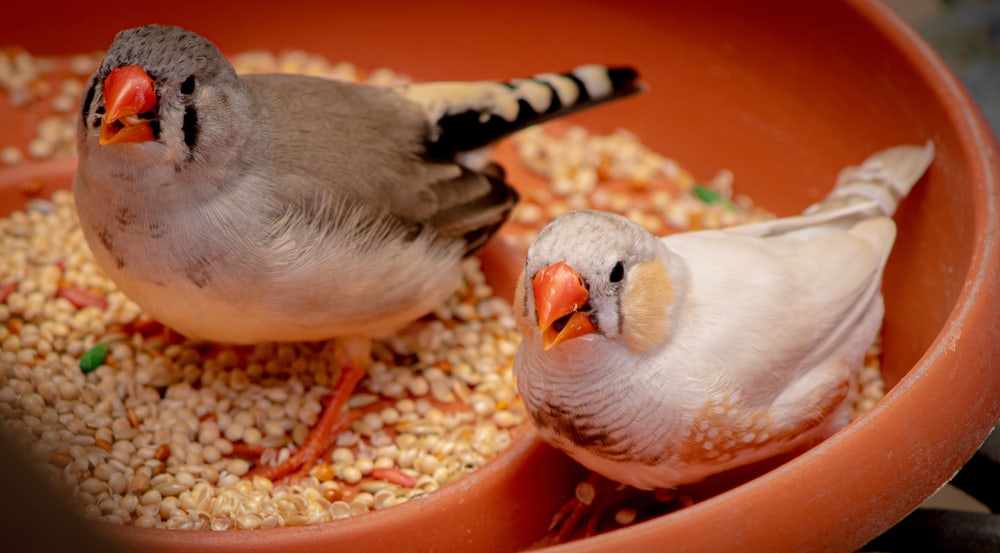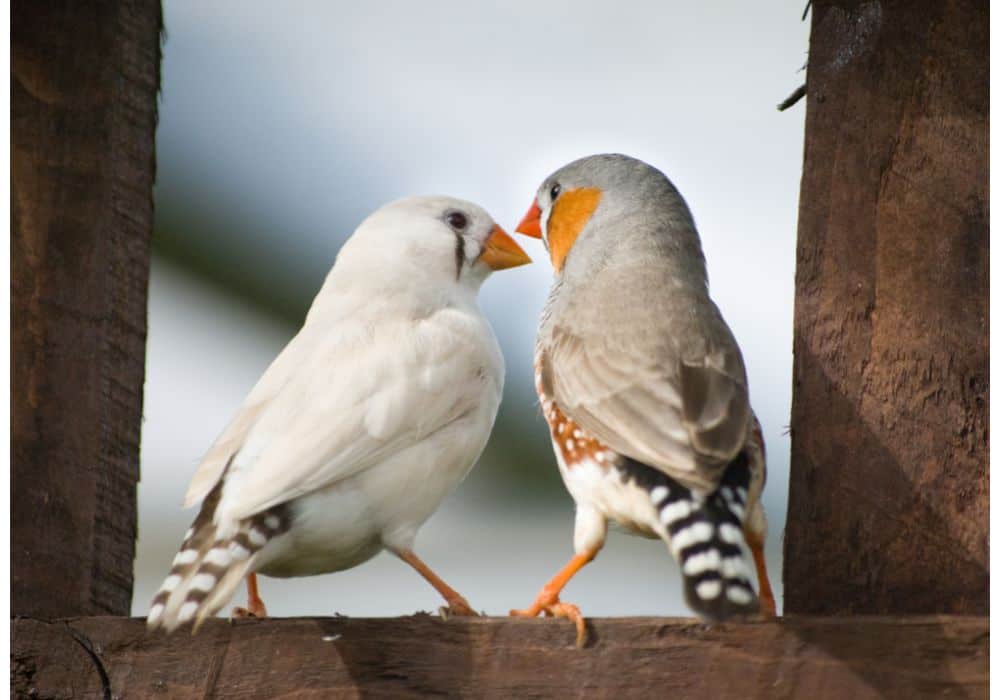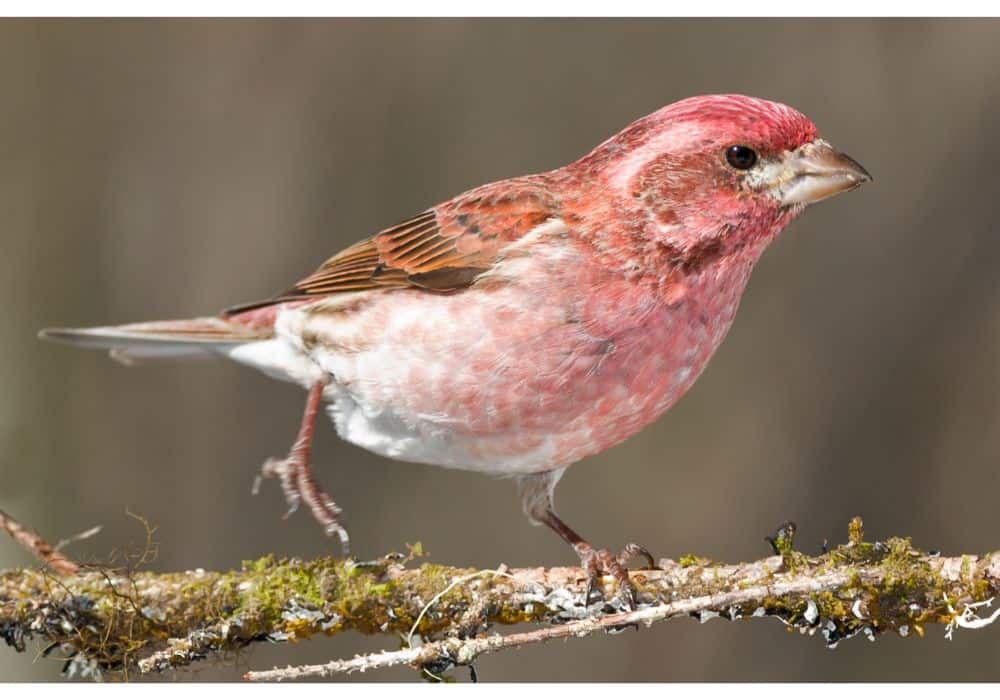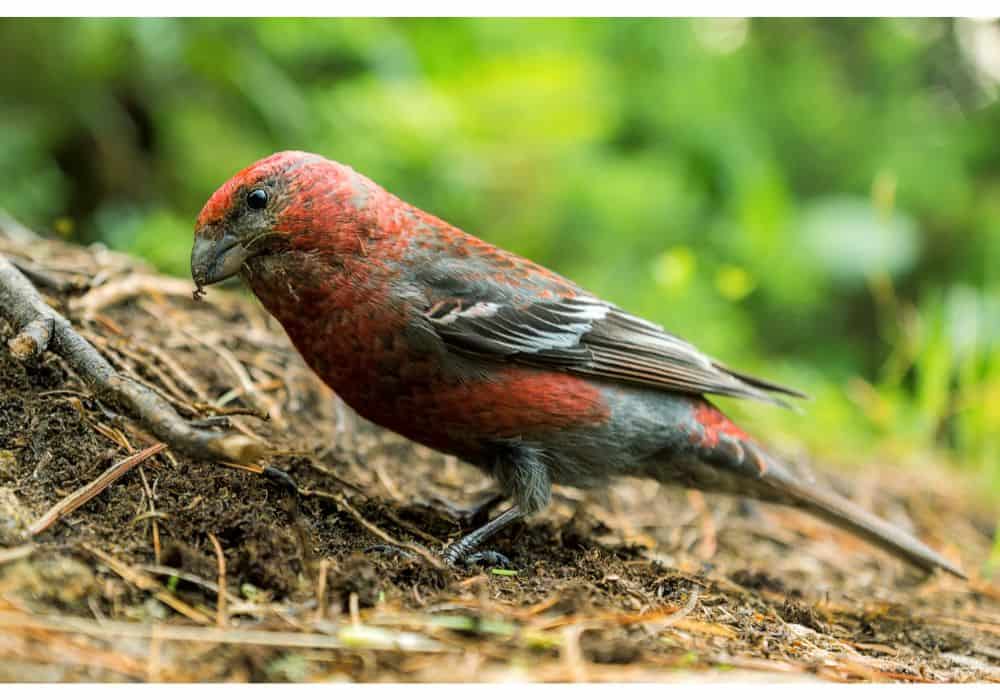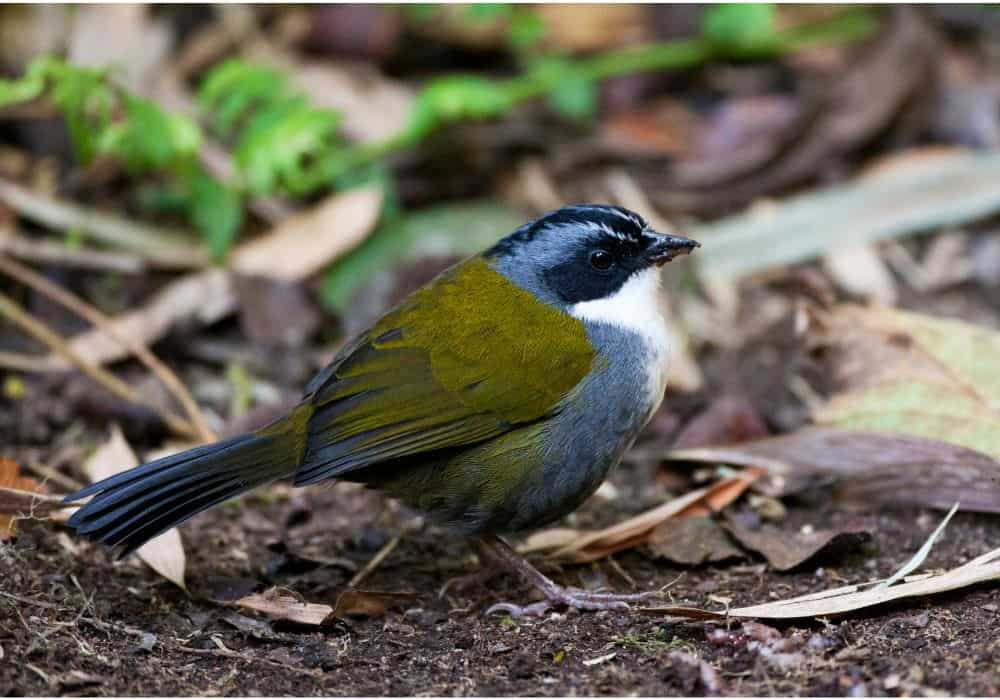If you live in North America, you’ve likely seen a few finches outside or in your yard. Are you curious about these beautiful, sing-song birds?
If you’re asking yourself what finches eat, the simple answer is seeds. These birds love to peck at sunflower, thistle, corn, millet, and many other seeds in their natural habitat. Their diet changes with the seasons, so when seed supplies are low, they’ll also eat insects, plants, and even some fruits and vegetables.
In this article, we’ll cover what finches eat in detail, including different species of finch, pet finches, and more.
What Do Finches Eat?
Finches are primarily herbivores, varying their diet depending on what’s available in the region. A wild finch and a pet finch will have different diets, but both should meet the nutritional requirements of the animal. For example, when a finch is going to lay eggs, it will need to consume more calcium.
If you have a pet finch and want to make sure it’s receiving all of the nutrients, vitamins, and minerals it needs, see your veterinarian for a professional checkup.
Captive Finches
Captive finches are usually fed commercial bird seed mixes. These mixes tend to have between two and five seeds mixed together, although they aren’t always the best ones.
Commercial seeds have a bad tendency to pack together high-fat seeds, which are different from a wild finch’s natural diet. This could be a factor that leads to a shortened lifespan for your pen finch. Instead, opt for commercially pelleted finch food mixed combined with less fresh produce and seeds.
Contrary to what most believe, seeds should not be the entire diet of a pet finch – just a part of it. The majority of their diet should come from pelleted food mixed with fresh produce and seed.
Fresh seed options include sunflower, thistle, and safflower seeds. Fresh produce can include tomato, zucchini, spinach, winter squash, parsley, broccoli, carrots, peas, and green beans. You can even throw in some fresh fruit now and again like bananas, apples, nectarines cherries, pears, peaches, strawberries, or pineapple.
Wild Finches
There are roughly 240 species of true finches spread throughout the world. Most of these eat a variety of grains and seeds, depending on the season. Some seeds and grains in their diet are:
- Black oil sunflower seeds
- Thistle seeds
- Canary seeds
- Sunflower hearts
- Quinoa
- Rice
- Buckwheat
- Corn
- Barley
- Oats
- Millet (white or red)
They may also eat fruits, leafy greens, vegetables, and berries – such as raspberries, blueberries, or blackberries – when seeds are sparse.
Wild finches in breeding season will pick at certain insects, although bugs are not a staple of their diet. These insects may include beetles, crickets, mealworms, wasps, termites, and other types of worms.
Baby Finches
The adults in breeding season that eat insects, such as aphids and gnats, regurgitate them to their young. These baby finches need protein to help them grow. Mother finches will also regurgitate seeds, consistently feeding their babies for the first three weeks or more.
Once the baby becomes a juvenile and eventually leaves the nest, it will find its own food.
What Do Different Types of Finches Eat?
Not all species of finch snack on the same seeds and food. Below are some of the most common finches in North America and what they tend to eat.
- The Red Crossbill eats spruce, pine, hemlock, larch, or Douglas-fir seeds, as well as some insects. They remove the seed coat before swallowing their seeds.
- Gray-Crowned Rosy Finches forage for Whitlow grass, spring beauty, willow weed, sea parsley, wild parsnip, mustard, chickweed, Russian thistle, sunflower, and cut-leaved daisies.
- House Finches love to eat different seeds, grains, veggies, fruits, greens, berries, and insects. The insects include beetles, caterpillars, and mealworms.
- The American Goldfinch prefers thistle seeds and black oil sunflower seeds, berries, fruits, greens, and veggies.
- Lawrence’s Goldfinchspecies eat native weeds, seeds, chamise, peppergrass, tree buds, tree galls, and insects.
- The Purple Finch eats Nyjer seeds, tulip, maple, and elm seeds. They sometimes eat insects like caterpillars, grasshoppers, beetles, and mealworms.
- Lesser Goldfinches snack on sunflower, weed, and thistle seeds, as well as flowers, tree buds, insects, and certain fruits and berries.
- The Cassin’s Finch eats leafy greens, berries, buds, seeds, fruit, veggies, and berries.
Do Finches Change Their Diet by the Season?
Finches change their diet by the season depending on what’s available. They’ll also adjust their diet during seasons for breeding.
Many finches begin breeding in the spring, around March. While a finch’s diet is compromised of more than two-thirds of seeds, breeding brings a need for more protein as the mothers develop eggs and then regurgitate food to feed the hatchlings.
This is the main time of the year when you’ll see females eat insects. Even so, consumption of insects is still minimal and you may not see as many males pick up the habit.
During the warm summer months and the beginning of fall, finches will enjoy a smorgasbord of grains and seeds.
Finally, in winter, the finches’ seed and grain supply will be limited. Especially in North America, where many finches live, the ground made be frozen and covered in snow.
This is the time when finches turn to fruits, berries, and whatever greens are still available. They may also snack on berries and greens in the summertime, depending on the plant.
How Much Do Finches Eat?
Since finches are small, opportunistic eaters who forage for their food, you will spot wild finches eating throughout the day.
Their consumption may total between 1 and 2 teaspoons of seed every day, which is what you should feed finches in captivity. You can also add some greens, berries, veggies, fruits, and insects to this, totaling about 1/5 of their total diet.
If feeding multiple finches in the same cage, use separate dishes to make sure each bird has the same access to food.
We recommend taking your finch to the vet regularly to make sure it’s receiving all of its nutritional needs – a deficit may cause illness or even premature death.
What Not to Feed Finches?
As mentioned earlier, commercial bird seed may not be optimal for your pet finch. Instead, opt for a combination of commercial pellets and natural seeds or foods.
Certain foods are said to be toxic to finches, causing illness or even death – especially avocado. You should also avoid feeding finches vegetables with a high water composition. These are usually pale in colors, such as celery, cucumber, or iceberg lettuce. Grapes also have a low nutritional value for finches.
As a general rule, never feed finches or other birds chocolate, highly processed, salty, or sweetened human foods.
Tips for Feeding Finches
If you want to attract more finches to your yard, try using a platform/tray, tube, hopper, or window feeders. These are the easiest feeders for finches to access.
In a tube bird feeder, add Nyjer and sunflower seeds. Platform feeders can hold seeds, fruits, berries, grains, and greens. Hopper feeders are best for grains and seeds. Fresh seed will attract the most finches to your backyard.
Be sure to place the feeders in a quiet area where the birds will feel safe. Brightly colored ribbons or plants near your feeders will also catch their eyes. The feeders should be cleaned often to promote healthy eating and returning finches.
As for pet finches, be sure to:
- Monitor how much they eat daily, especially if you have multiple finches together
- Offer fresh water daily to aid in digestion and health
- Give them fresh fruits and veggies every 2-3 days
- Clean all water and food trays daily
Conclusion
Finch species are small, vocal birds that can be found all around the world. Common in North America, their diet consists of about 80% seeds, including sunflower, thistle, millet, rice, and others.
The remaining 20% of their diet comes from berries, plants, fruits, vegetables, and insects. The latter is eaten especially during the breeding season by mothers and their babies.
If you have a pet finch or want to attract them to your yard, be sure to combine commercial pellets with natural seeds and food for the best results.
FAQ:
What Is a Finch’s Favorite Food?
Finches love to eat seeds, particularly black oil sunflower seeds and thistle seeds, among others. Their favorite seed depends on the species and what is available in their habitat.
Can Finches Eat Cucumber?
Finches can eat cucumber, but it isn’t the most nutritionally beneficial vegetable option for them. Avoid feeling them pale veggies like iceberg lettuce, celery, and cucumber, and opt for a more nutritionally-dense veggie instead.
What Kind of Vegetables Can Finches Eat?
Finches can eat tomato, zucchini, spinach, winter squash, parsley, broccoli, carrots, and green beans. Remember that this should only make up a very small part of their diet.
Do Wild Finches Have the Same Diet as Pet Finches?
Both wild finches and pet finches eat seeds and grains as their main source of food. The remaining 20% or so of their diet should consist of vegetables, fruit, plants, or insects. Wild finches tend to have a more varied diet than pet finches.
